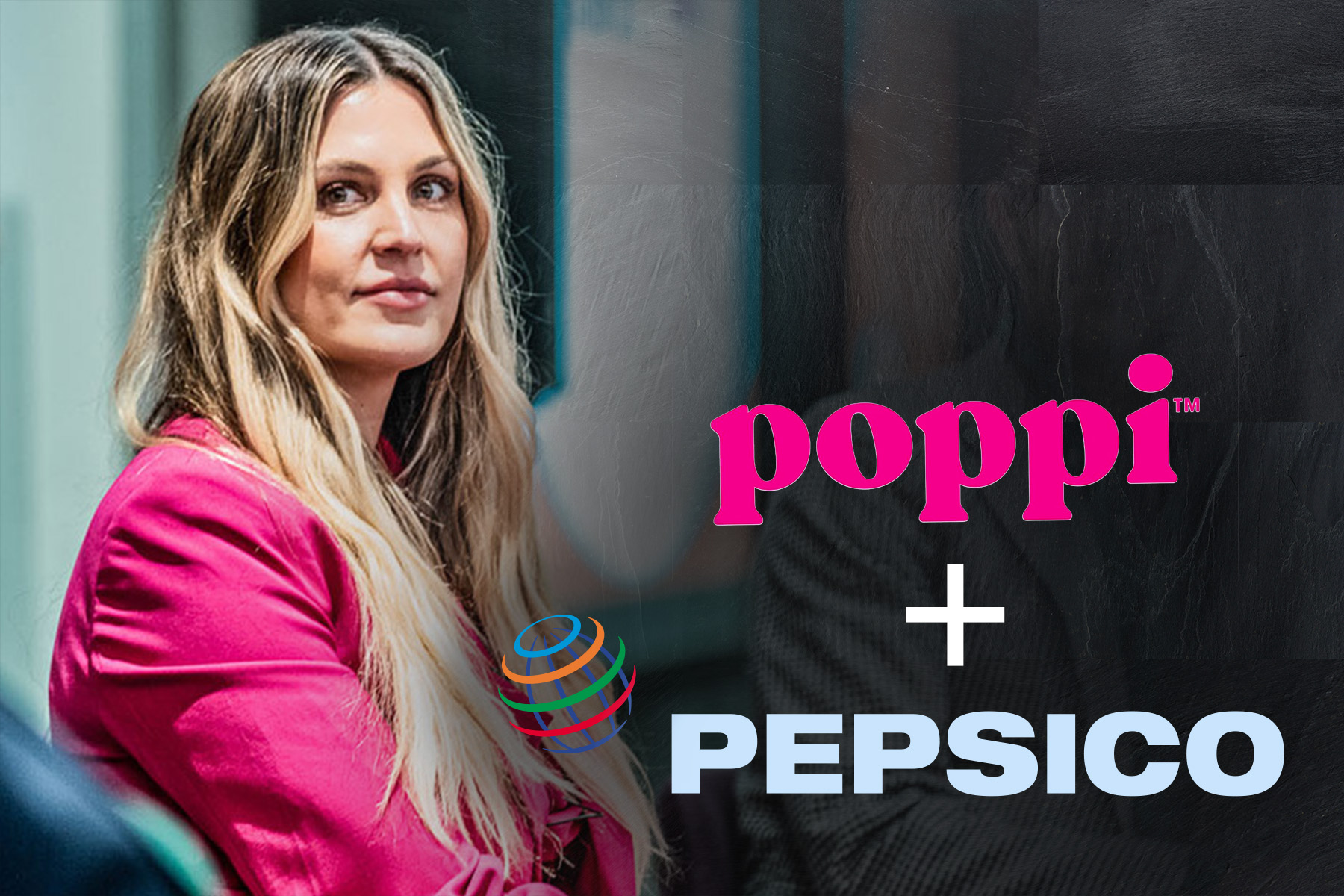
Q&A with Closed Loop Executive Director Kate Daly: Future Smarts 2018
Says Plastic Packaging ‘Huge Risk’ for Beverage Industry

BD’s Dec. 7 Future Smarts conference featured an interview with Kate Daly, executive director of Closed Loop Partners’ Center for the Circular Economy. Coca-Cola, PepsiCo, Starbucks and McDonald’s are among 14 consumer product companies that have partnered with Closed Loop since 2015 to make recycling more viable. Retailers including Walmart and Amazon also are involved. Daly previously worked for New York City in economic development and landmark preservation. She says beverage companies face significant risk from regulators and shareholder activists when it comes to PET waste. She also said collaboration by industry competitors will be crucial to staying ahead of regulation. The Q&A below was edited for clarity and space.
BD: Tell us how Closed Loop Partners works.
KD: It’s a partnership with the major beverage companies and consumer packaged goods companies. Our goal is to invest in recycling infrastructure and technologies that advance a circular economy in North America. We do that by investing in technologies that enable recycling facilities to increase their capacity. The metrics that we look at in terms of impact include greenhouse gas emissions, prevented waste that’s diverted from landfills, the number of Americans who have access to recycling and also the amount of money that we save local municipalities and cities. It’s really about helping cities capitalize on the money to be made from recyclables.
BD: Your Center for the Circular Economy is facilitating a collaboration between McDonald’s and Starbucks to create a new, sustainable fiber coffee cup. These companies are competitors. Is this the kind of industry collaboration needed to make progress on waste and recycling issues?
KD: We also have Coca-Cola and Yum! Brands as partners on this cup initiative. We have more companies joining. A huge part of that is the recognition that brands are not in a competitive space where recycling infrastructure is concerned. There is very much a shared interest in making sure that the materials are able to go through the system, so the companies aren’t criticized for having materials that are not recyclable. Even though they may have different approaches within their businesses, they’re very aligned on an understanding that it’s only through the collaborative approach and the partnership and getting a certain volume of similar types of materials into the infrastructure that the infrastructure can be accessible to meet their needs.
BD: What is the center’s role in the collaboration?
KD: We really see ourselves as a convener, both of brands and entrepreneurs and innovators. We launched an innovation challenge and received almost 500 applications from entrepreneurs, whether very established companies or emerging startups, or some really interesting high school students, who were also really excited to submit something. Some of them were ideas specific to a new non-plastic liner for the cup. Others were a complete solution. We also got some proposals for reusable cup systems. We reviewed with our partners all of those, and we’re also going to launch an accelerator for some of the emerging companies this spring, so that we can continue to incubate their work.
BD: What are the attributes you are looking for in this cup?
KD: Fully compostable and fully recyclable. The challenge with recycling is that when you have mixed materials, it’s a problem for most facilities. Right now with the current cup, with the fiber exterior and the plastic coating, there are some recycling facilities that are able to separate that out, but most cannot.
BD: So the goal is to scale and commercialize the ideas?
KD: There may be some companies who would be ready to have a cup to market in 2019. There might be other companies who are still working on a very innovative new liner system, and that’s more of a two- to five-year enterprise. We’re really seeing the cup as part of a larger food packaging solution that we want to help solve for. We want to make sure that we’re supporting innovation that is on a five- to 10- to 15-year timeline and really supporting today what the solutions of tomorrow could be.
BD: Do you anticipate a collaboration of this sort for plastic beverage containers?
KD: Absolutely. We see tremendous pressures on plastic, in particular coming out of the European Commission Regulations on single use plastics. I think that those sorts of regulations and constraints are absolutely going to help drive innovation and creativity, and this pre-competitive collaboration is a great approach in order to solve for some of those challenges as that pressure increases.
BD: Have those conversations started yet or is that just an aspiration?
KD: Those conversations have started in the circular economy world, but there are not yet brands that are coming together. There’s so much R&D underway within those companies and the infrastructure that exists for PET recycling is very robust, so there’s less of a need to change the infrastructure and more of a need to be responsive to the public demand for plastic alternative.
BD: What has to happen to scale up good recyclers that create clean bales of recyclable materials for reuse?
KD: Technology investments. That’s a huge focus of the fund. How do we take those companies that are doing really well and help them grow and scale? How do we take companies that have tremendous potential and a huge amount of material with value to be processed and make sure that they have optical sorters, robotics and artificial intelligence? All of these emerging technologies are critically important for the waste management field and for these recycling facilities. A lot of these emerging companies, like any emerging startup or small company, need capital investment, mentorship and networking so they can grow.
BD: Is there an opportunity to link those companies with consumer goods manufacturers to facilitate that kind of financial help?
KD: That’s the networking that we like to build. We’d like to make sure that the brands are familiar with the emerging technologies and also that we try to help immerse them in the logistics and realities of the end of life infrastructure. We like to get people in the room who wouldn’t necessarily have ever been in meetings together. That’s where we see these incredible creative synergies and problem solving happen.
BD: When you think about the beverage industry and PET plastic in particular, how much risk is there in not acting faster or collaboratively?
KD: There’s a huge risk. Part of that risk is regulation. There’s also the risk of shareholder activism. Right now, straws are in the spotlight. It’s probably not too far of a stretch to see that that’s going to extend to other applications of PET and other plastics in future. We really look at things through the lens of what’s the risk mitigation and how do we anticipate the regulatory and business climate of the future? How do we make sure we tap resources that exist and get them to the companies that need them, so we can help reduce their reliance on virgin feedstock. In the United States, there’s a real opportunity to learn lessons from what’s going on in Europe and to start to get out ahead of those regulatory interests. It certainly would be a long time before we’d see similar types of regulations. Although, there are half a dozen cities in the U.S. who’ve banned straws. That’s really the first wave of this reaction to plastic that we’re seeing.
BD: Is it important to make it easier for consumers to recycle? Can technology solve that problem?
KD: I think it’s a very challenging balance because overall you need to make things as easy as possible. We’re just not seeing the level of education in schools that you have in other countries, where from day one children learn how to sort and why that needs to be done. We can definitely get recycling rates higher, but at the same time a lot of municipalities have switched to single stream recycling. They are more reliant on technologies that take on that burden of sorting rather than expecting residents and commercial businesses to take that on themselves. It needs to be both.
BD: Will problems with glass recycling in the U.S. be solved?
KD: Glass is a huge challenge. The market’s dropped out of glass. Many municipal recycling programs do still collect glass. A lot of glass is being landfilled. We see a huge opportunity here. We’re investing in companies that have innovative approaches. For example, taking glass that’s been collected through municipal recycling collection and turning it into aggregate use for building construction and highway construction projects.
BD: What’s your view of trash to energy?
KD: I take a dim view of trash to energy, because it’s a completely linear cycle. It’s just takes raw resources and uses them, sometimes only once, and then burns them for energy. Then their value is gone. Then you have to go back to the beginning and extract a raw resource and start all over again. We don’t have enough raw resources to do that..

